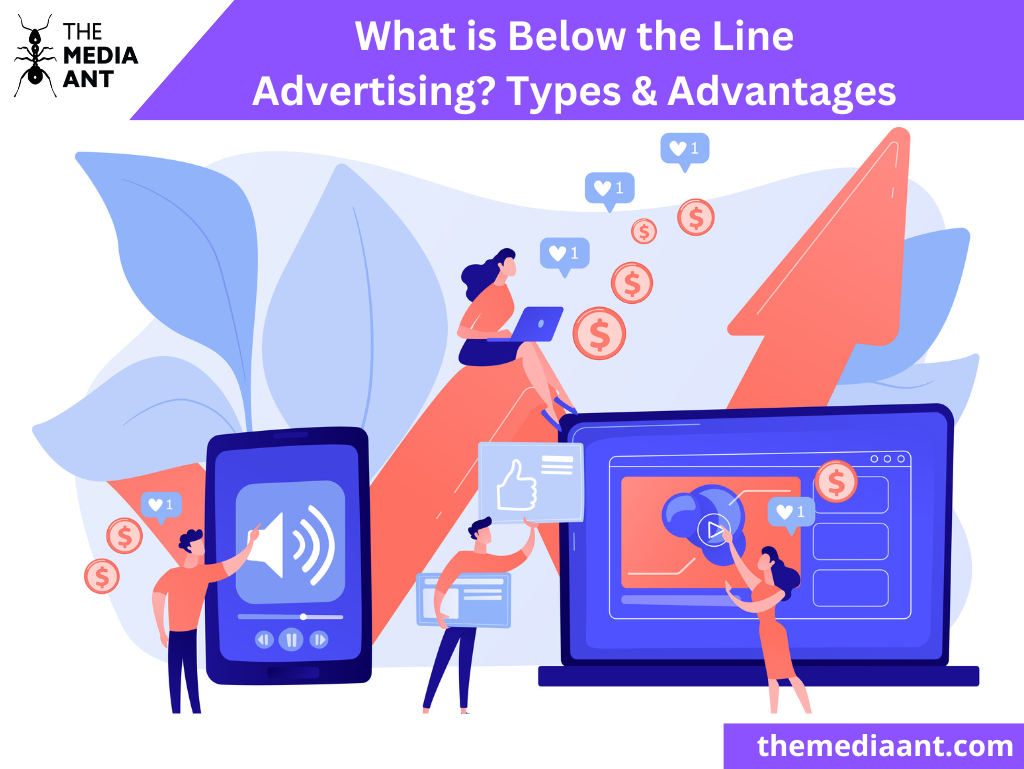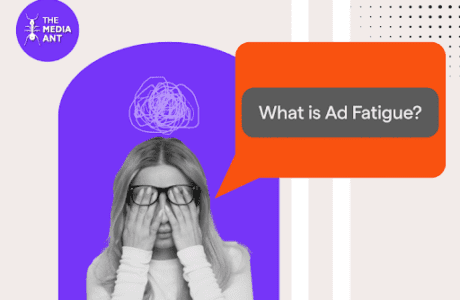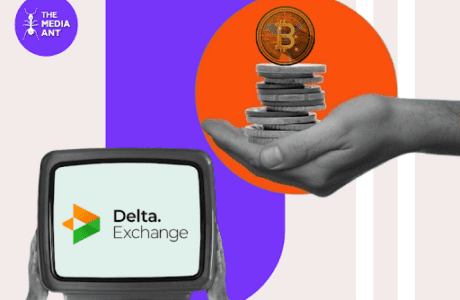Imagine a marketing landscape where your brand doesn’t just shout from billboards or dance across TV screens but rather engages in intimate conversations, hosts exclusive gatherings, and crafts experiences tailored to each individual. Welcome to the world of “Below the Line Advertising” (BTL), a realm where marketing transcends the ordinary and dives into the extraordinary.
In this blog, we’ll journey through the hidden corridors of BTL advertising, uncovering its secrets, unraveling its power, and understanding why it’s the strategic ace up every marketer’s sleeve. Buckle up, because we’re about to explore the magic that lies beneath the surface of traditional advertising, where connections are forged, experiences are curated, and brands leave an indelible mark on hearts and minds.
What is Below the Line Advertising?
Below the Line (BTL) Advertising refers to a marketing strategy that focuses on targeted, specific, and often localized promotional activities that reach a more niche audience. Unlike Above the Line (ATL) advertising, which targets a broader audience through mass media channels like television, radio, and print, BTL advertising aims to engage customers on a more personal and interactive level. BTL activities are often more cost-effective and can yield direct and measurable results.
Key characteristics of Below the Line Advertising include:
Targeted Engagement: BTL advertising is highly targeted, aiming to reach a specific demographic or audience segment. This personalization can result in higher engagement rates.
Interactivity: BTL activities encourage two-way communication between the brand and the consumer. Examples include events, workshops, contests, and direct mail.
Measurability: BTL campaigns are often easier to measure in terms of ROI and effectiveness since they usually have a specific call to action (CTA) or goal.
Cost-Effective: BTL activities can be more budget-friendly compared to large-scale ATL campaigns, making them suitable for small businesses and niche markets.
Localized Impact: BTL efforts can be customized to suit local preferences and cultural nuances, making them more relevant in certain regions.
BTL advertising allows for direct interaction between the brand and the consumer, enabling a better understanding of customer needs and preferences.
Examples of Below the Line Advertising include trade shows, experiential marketing events, product demonstrations, sponsorships, influencer partnerships, loyalty programs, and more. BTL strategies are especially effective for creating deeper brand engagement, increasing brand loyalty, and generating word-of-mouth referrals within specific target audiences.
Types of Below-the-Line Ads
Below-the-line (BTL) advertising refers to promotional activities that are targeted at specific individuals or groups, often with a more personalized and direct approach compared to traditional mass advertising (above-the-line advertising). BTL ads aim to create a more direct connection with the audience and generate immediate response or engagement. Here are some common types of below-the-line ads:
Direct Mail: Sending promotional materials, brochures, catalogs, or offers directly to the target audience’s physical address.
Email Marketing: Sending targeted promotional messages, newsletters, or offers to a list of subscribers via email.
SMS Marketing: Sending promotional messages or offers directly to mobile phones via text messages.
Telemarketing: Directly contacting potential customers over the phone to promote products or services and generate leads.
Point of Sale (POS) Displays: Promotional materials, banners, or displays placed at the point of sale (cash register or checkout) to encourage impulse purchases.
In-store Promotions: Promotions within the store premises, such as product demonstrations, sampling, contests, or loyalty programs.
Events and Experiential Marketing: Organizing events, workshops, seminars, trade shows, or product demonstrations to engage directly with customers and showcase products or services.
Public Relations (PR) Activities: Managing public perception and building positive relationships with the media, influencers, and the public to generate positive coverage and brand awareness.
Sponsorship and Partnerships: Collaborating with other brands, events, or organizations to promote products or services to a specific target audience.
Promotional Gifts and Giveaways: Distributing free samples, branded merchandise, or gifts to customers as a way to promote products or create brand recall.
Content Marketing: Creating valuable and relevant content (such as blog posts, articles, videos, or infographics) to educate and engage the target audience.
Social Media Marketing: Engaging with customers and promoting products or services through social media platforms, utilizing both organic and paid strategies.
Referral Programs: Encouraging existing customers to refer new customers by offering rewards or incentives.
Loyalty Programs: Offering special rewards, discounts, or benefits to repeat customers to encourage customer retention.
Interactive Kiosks: Placing interactive kiosks in stores or public spaces to provide information, offer discounts, or facilitate transactions.
Direct Response Advertising: Creating ads that encourage an immediate response, such as calling a toll-free number or visiting a website to make a purchase.
Personal Selling: Engaging in one-on-one interactions with potential customers, such as door-to-door sales or direct selling in a retail setting.
These are just a few examples of below-the-line advertising methods. The effectiveness of each method can vary depending on the target audience, the nature of the product or service, and the overall marketing strategy. Successful BTL campaigns often leverage a combination of these methods to create a comprehensive and engaging marketing approach.
Advantages of below-the-line advertising
Targeted reach: BTL advertising can be targeted to a specific audience, which can help to improve the effectiveness of the campaign. For example, a company that sells shoes might target its BTL advertising to people who have recently searched for shoes online or who have visited shoe stores in the past.
Measurable results: BTL advertising can be measured to track the results of the campaign, such as the number of leads generated or the amount of sales made. This can help businesses to see how effective their BTL campaigns are and to make necessary adjustments.
Cost-effective: BTL advertising can be a cost-effective way to reach a large audience. This is because BTL campaigns can be customized to target specific demographics and interests, which can help to ensure that the advertising is seen by the people who are most likely to be interested in the product or service being advertised.
Personalized touch: BTL advertising can be more personal and interactive than traditional ATL advertising, which can help to build relationships with customers. For example, a company that sells cosmetics might offer free samples to customers at a local mall or host a makeover event. This can help customers to feel more connected to the brand and to be more likely to purchase the products.
Builds brand awareness: BTL advertising can help to build brand awareness by creating a positive association between the brand and the target audience. For example, a company that sells coffee might sponsor a local coffee shop or donate coffee to a local charity. This can help to create positive feelings about the brand and to make it more memorable to potential customers.
Overall, BTL advertising can be a valuable tool for businesses of all sizes. It can be used to reach a specific target audience, generate measurable results, and build relationships with customers. However, it is important to carefully plan and execute BTL campaigns in order to be successful.
Below the Line Advertising Examples
Here are a few examples of below-the-line advertising-
Direct Mail: Sending personalized offers via physical mail to a specific audience.
Email Campaigns: Sending tailored promotions directly to subscribers’ inboxes.
In-store Promotions: Offering discounts or samples at the point of purchase.
Social Media Contests: Running engaging contests on platforms like Instagram or Facebook.
Loyalty Programs: Rewarding repeat customers with exclusive benefits.
Product Demonstrations: Showcasing products’ features and benefits in-store.
Events and Experiences: Hosting workshops or events to engage customers directly.
SMS Marketing: Sending targeted promotions via text messages.
Interactive Kiosks: Setting up booths with interactive content.
Referral Programs: Encouraging customers to refer others for rewards.
Remember, below-the-line advertising aims to engage on a personal level, encouraging immediate response or interaction.
FAQs Related to Below the Line Advertising
What is below the line in advertising?
Below-the-line advertising refers to targeted promotional activities that engage a specific audience or individual rather than mass audiences. It includes direct communication methods like direct mail, email marketing, social media contests, and events. BTL advertising aims to create direct engagement and elicit a response from the audience.
What is an example of below-the-line advertising?
An example of below-the-line advertising is “Direct Mail.” This involves sending personalized promotional materials, such as brochures, catalogs, or discount offers, directly to individuals’ physical addresses. It’s a focused approach that aims to capture the recipient’s attention and prompt them to take action.





